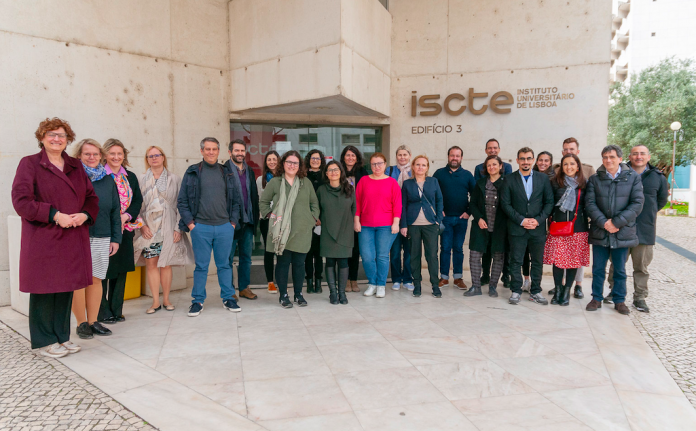Important national and regional disparities remain in the school to work transition domain, especially among the most vulnerable groups. In 2022, the share of NEETs ranged between 4.2% in The Netherlands and 19.8% in Romania and were higher in rural areas (12.6%), compared to cities (10.9%) or towns and suburbs (12.2%). This trend was evident in 11 out of 27 countries, particularly in Eastern and Southern ones, with differences sometimes reaching 10 to 15 percentual points (e.g. Lithuania) according to the Eurostat. The same pattern has been observed for other indicators, such as youth unemployment or tertiary education attainment.
The policy response to these regional asymmetries is inconsistent, failing to scale-up public services’ impacts. According to recent reports, the Youth Guarantee coverage is uneven to say the least, ranging from 2.6% in Hungary to 65.9% in Lithuania, with the EU27 average coverage reaching 40.3%. In the meantime, new policy instruments, such as the Recovery and Resilience Framework national plans do not compensate for the subnational disparities in school to work transition, particularly in Southern countries where these disparities remain greater.
Public services, particularly Public Employment Services (PES) can play an important role in mitigating limitations in policies implementation and improving the odds of NEETs social and labour market inclusion. However, as digitalization of public services spreads, school to work transition is also growingly happening outside the institutional support framework, particularly in the case of most vulnerable young people. This is more often the case in rural and peripheral areas. This trend is due to PES service delivery being often mismatched from vulnerable young people’s, skills, services centralization or dismantlement and increasing relevance of informal sources of support, including family, friends, personal social networks or social media for job search among vulnerable youth.
The Track-IN project aimed to understand how exactly PES service delivery was meeting rural NEETs needs, taking into consideration an increase on digitalized services deployment, in the aftermath of COVID-19. Specifically, our vision was to deliver an evaluation model of the effectiveness of Public Employment Services (PES) tracking support types – digital, human-mediated or mixed – in improving employability among rural NEETs aged 25-29. We also intended to do so on Baltic, South and South-eastern States with disparate rural NEETs’ proportions and different degrees of PES digitalization.
The results of the Track-IN project can be found in multiple scientific outputs, including 9 scientific papers, one special issue on the Politics and Governance journal as well as on other deliverables targeting service providers and decision-makers (e.g., one policy-brief, two manuals and series of national factsheets). Below, we share the most important conclusions of our effort to better understand the role of PES for effectively supporting rural NEETs.
Main takeaway lessons
Our main research results can be located at three different levels. At thepolicies level, we found that here is little consensus on the definitive age group at which NEETs could be targeted and on the actual need to target them as such. Furthermore, welfare regimes considerably shape on-the-ground policies for NEETs, with important gaps found in Southern and Eastern countries where institutional support and services capacity is more limited.Moreover, policies continue to show gaps in terms of adjusting programs to different territories, thus not addressing increasing gaps between more and less affluent areas. At the services levelwe were particularly (although not exclusively) interested on the effects of digitalization. Despite several practical advantages (e.g., releasing staff from time‐consuming administrative tasks), PES digitalisation will only be beneficial for vulnerable young people such as rural NEETs if three interrelated challenges are considered: nurturing trust in institutions and digital tools, supporting digital transformation of PES institutional organization, and adopting a co‐design lens for PES digitalisation. At the individual level, two main conclusions were very relevant for the project’s team. First, among non-urban NEETs, life satisfaction is positively associated with PES on-the-ground availability, while a positive self-efficacy is connected with higher levels of social support provided by friends and family. Thus, a combination of accessible services with informal support are key to promote well-being which, in turn, is usually associated with better labour market integration outcomes. Secondly, stronger emotional, interpersonal, and practical support received from PES is associated with stronger odds of rural youths transitioning from the NEET status to an active work status.
As a conclusion, the main lesson learned here is that the quality of interpersonal support matters to activate NEETs, meaning that bureaucratic staff approaches as well as digitalization are not enough to effectively support vulnerable younger generations in the countryside. Our findings contradict, therefore, the dominant techno-optimism in public services provision, showing that there are nuances which prevent digitalization from being effective. Adapting the benefits to different groups is key to make sure inequalities in social services provision does not grow due to digitalization.
Francisco Simões, Elena Marta and Mariano Soler on behalf of the Track-In project team


